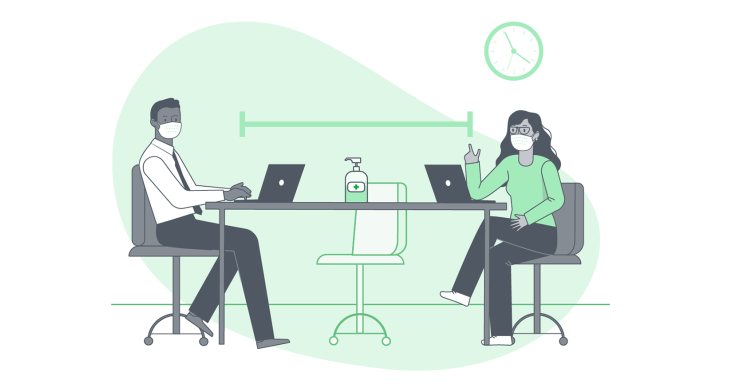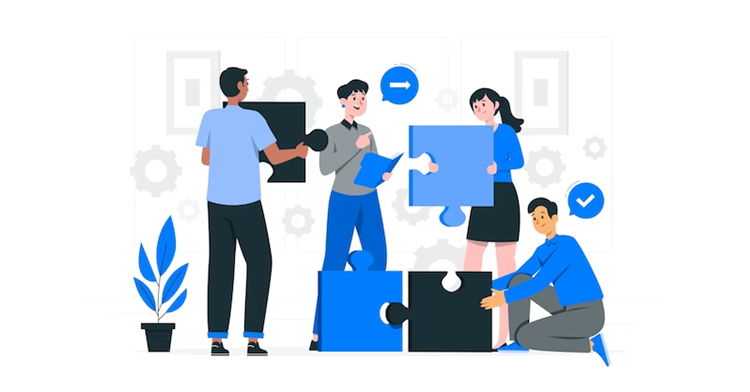1. Returning to the office post-COVID presents challenges such as employee uncertainty, health concerns, and feelings of isolation.
2. To address these challenges, organizations should adopt flexible work models, prioritize employee wellness, and enhance recognition systems.
3. Key strategies to boost engagement include refocusing on learning and development, promoting coaching, and increasing leadership interaction.
4. Team-building initiatives are essential to re-establish connections and a sense of belonging among employees.
Recently, many organizations have been looking to return to their in-office model of working for their workforce. In this context, they must develop effective employee engagement strategies for their back-to-office workforce.
Even as businesses gradually reopen their physical workspaces, they face several challenges in keeping their employees motivated and engaged when returning to the office.
The most important of these challenges include the following.:
1. Employees are unsure about working from the Office
2. Employee Health and Safety Concerns
3. Feeling of Disengagement and Isolation
4. Stress and Burnout


In the aftermath of COVID-19, employee opinions about the perfect workplace model are divided.
Today, one segment of employees may prefer the regular working-from-office model.
Another segment may consider the hybrid working model the best, while the rest prefer to continue working from home.

However, fears and concerns about the pandemic remain.
Organizations need to understand the health and safety risks involved in getting the workforce to restart working from the office.
Therefore, social distancing and other protocols must be followed for the back-to-office workforce.

So, the pandemic has forced most employees within organizations to work remotely for an extended period.
Therefore, this has created a sense of emotional disconnect among the employees towards their organization. and their coworkers.
Bridging this gap will be a significant engagement challenge.

Significantly, the multiple waves of the pandemic and changes in the working model have affected most employees.
Most employees and their managers were ill-equipped to handle remote working and managing their work-life balance.
Therefore, employees are stressed and on the verge of burnout.
Overall, returning to work from the office after a long time has added to their stress levels.
A highly engaged workforce is the key for organizations seeking consistent growth and success in the post-pandemic world.
Discussed below are a few practical strategies that can help organizations ensure the same:
1. Implement Flexible Work Model
2. Renew Focus on Employee Wellness
3. Drive Employee Recognition
4. Refocus on Learning and Development
5. Promote Coaching and Mentorship
6. Increase Leadership Interaction
7. Work on Team Building Initiatives


Organizations need to adopt a more flexible approach towards the preferred work timing and location for their back-to-office workforce to boost engagement and ensure a better work-life balance.
They should prioritize the timely completion of assigned tasks rather than focus on where or how the employees choose to perform them.

Though the devastating waves of the pandemic might have passed, there is still a danger of further waves.
Hence, organizations should ensure the health and safety of their workforce who would be coming back to the office through regular sanitization, social-distancing protocols, and health checks.
Mental wellness should also be an essential area of focus for organizations, considering that employees have just come out of a prolonged phase of stress and anxiety due to the pandemic.
Employee assistance programs or counseling should be offered to employees returning to the office.

One of the most significant challenges employees have faced in the last couple of years is the lack of prompt recognition of their efforts and contributions due to remote working and the lack of proper systems.
Unrecognized employees tend to become disengaged over some time.
Hence, organizations need to reverse the disengagement by implementing proper systems and processes for employee rewards and recognition.
They should leverage recognition platforms for timely recognition and incorporate peer-to-peer recognition to create a positive work environment.
As much as possible, rewards and recognition should be presented to employees in large forums such as town halls, floor huddles, team meetings, etc., to drive social visibility and engagement.

The past two years have been relatively stagnant for most employees regarding learning and development opportunities.
So, providing them with structured learning and development activities can pave the way for their professional and personal growth and enhance their commitment to the organization.
Organizations must provide classroom-based learning options in addition to the online learning that employees have been doing for the last two years.
Such classroom learning sessions will help employees build skills and competencies and contribute to engagement and team-building.

New hires and less-tenured employees have suffered dramatically during the pandemic and remote working.
When working remotely, they haven’t been able to promptly access the much-needed help, support, and advice from their supervisors and seniors.
Moreover, organizations need to encourage senior employees, managers, and leaders to get more actively involved in coaching and mentorship activities.
Managers should be trained to coach their team members.
Hence, a formal mentorship program might also be a good idea, especially for newer employees, to help them navigate the system.

One fundamental way to drive employee engagement is to increase senior leadership’s presence and interaction with the workforce.
Employees are keen to hear from their leaders about the changes in the business strategy in the ‘new normal’ and interact with them to address their queries about the organization and its future.
Senior leaders should make it a point to meet and interact with employees in person during town halls, floor meetings, etc.
Leadership interaction is one of the sure-shot ways to engage back-to-office employees.

Additionally, prolonged remote working has created a sense of isolation and disengagement among the employees.
Team building is the need of the hour to recreate the team bonding and camaraderie among the employees.
Therefore, promoting team-building activities can go a long way in boosting a sense of belonging among the employees and establishing connections with their coworkers.
Moreover, team lunches, outings, celebrations, contests, and games can help employees socialize in an informal setting and rebuild connections.
Organizations need to devise effective employee engagement strategies for their back-to-office workforce to enhance their motivation, commitment, and belongingness and drive greater business results.

Lead author: Sagar Chaudhuri, the Co-Founder and CEO of HiFives. He is an HR Tech Evangelist with over 25 years of corporate and entrepreneurship experience. In the past, Sagar has worked in leadership roles with companies such as Genpact, Infosys, and ICICI Bank. He has an engineering degree from IIT Kharagpur and an MBA from IIM Lucknow. Connect on LinkedIn
To stay updated on the latest HiFives blogs, follow us on Twitter (@MyHiFives)